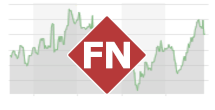Highlights
Stateline lies in the heart of the prolific La Sal Uranium-Vanadium District, adjacent to the La Sal Complex.
Hosts >19 historic mines with vanadium grades ranging from 1% to 3% V2O5, averaging 1.5%, significantly higher than North American peers.
Geological setting consistent with roll-front uranium or paleochannel-style U-V systems.
Focus on advanced airborne EM and AI-driven modelling to target high-value channel bends and trap zones beneath cover.
WOODLAND HILLS, CA / ACCESS Newswire / September 3, 2025 / Uranium American Resources, Inc. (OTC PINK:UARI) is pleased to provide a technical update on its Stateline Project, located in Montrose County, Colorado and San Juan County, Utah. This project, part of the recently announced acquisition of Jag Minerals Pty Ltd, presents a rare opportunity to explore and develop a high-grade vanadium-rich uranium system in one of the most geologically favorable parts of the U.S. uranium belt.

Figure 1: Stateline Project Location.
Geological Context and Deposit Model
Stateline is hosted within the Salt Wash Member of the Morrison Formation, a classic environment for roll-front or paleo-drainage U-V mineralisation. The project covers 2.75 mi² (7.12 km²) and includes over 19 historic mines, with grades such as:
Maud Mine: 3.01% V2O5 and 0.43% U3O8
Morning Glory: 2.56% V2O5 and 0.26% U3O8
(see Table 2 on page 4 of acquisition document).
The favorable channel sands in this area were deposited in a meandering, dendritic system. Reducing environments-created when organic material settled in low-energy pools-led to the precipitation of uranium from oxidised fluids. This mechanism mirrors Athabasca-style deposits, where carbonaceous or graphitic host rocks act as chemical traps.
According to technical reviewers, these deposits are likely sourced from mafic volcanics, which explain the unusually high vanadium content and potential for associated metals. The presence of evaporites in the surrounding basin adds to the metal-leaching potential of circulating brines.

Figure 2: Stateline Project, UAR rock chip samples, over USGS Uranium-Vanadium deposits of the La Sal Quadrangle, pp508.1
Targeting Next-Gen Discovery
Past exploration relied heavily on intercept trend mapping. However, Uranium American Resources is now advancing a more modern, technology-driven exploration program that includes:
Airborne EM (AEM): To detect conductivity contrasts associated with alteration halos and carbon-rich lenses.
Passive Seismic: To model paleo-topography and channel systems in 3D, revealing likely trap zones.
AI Drainage Modelling: Use of genetic algorithms and fuzzy logic to predict sedimentary trends using historic drill data.
These efforts aim to identify tight meander bends, downstream fault-controlled basins, and organic-rich trap sites, all of which are prime depositional environments for high-grade U-V mineralisation.
"The challenge is targeting these channel-hosted reductant zones beneath clay-rich cover, but the upside is immense. Combining AEM, seismic, and AI modelling gives us a real edge," said CEO William Hunter.
Next Steps
The company is in discussions with geophysical contractors including SkyTEM and Expert Geophysics, and is preparing for fieldwork including:
Core sampling for conductivity modelling,
Forward-modelling of AEM responses through overlying units,
Prioritising seismic imaging and inversion modelling.
With strong shareholder support and a technically robust asset base, Uranium American Resources is positioned to become a leading developer of U.S.-based critical minerals for the clean energy transition.
Enquiries
For further information, please contact:
William Hunter
CEO, Uranium American Resources, Inc.
M: +1 203 856 7285
E: bhunter@uraniumamericanresources.com
SOURCE: Uranium American Resources, Inc.
View the original press release on ACCESS Newswire:
https://www.accessnewswire.com/newsroom/en/metals-and-mining/uranium-american-resources-advances-high-grade-u-v-targeting-at-stateline-project-1068083

